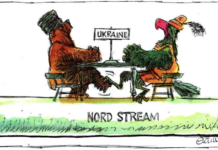
Rail is delivering up to $1.5 billion a year to New Zealand in hidden benefits, according to a study prepared as part of a joint KiwiRail/NZTA team looking at integrated transport planning.
“That far exceeds what the taxpayer is spending on rail,” KiwiRail Chairman Trevor Janes says.
The study, carried out by professional services firm EY, looked at some of the wider economic benefits the rail network brings to New Zealand.
“The areas where rail is delivering for New Zealand include cutting congestion, reducing greenhouse gas emissions, improving safety on our roads and lowering spending on road maintenance and upgrades.
“These benefits do not show up on the balance sheet, but they are very real, and they make a huge contribution to New Zealand.
“They need to be considered when choices are made about the transport options available, and how to allocate resources.”
Mr Janes says the biggest contribution from rail comes from the reduction it brings in road use.
“Rail is taking cars off the road and it’s taking trucks off the road. That is saving the country $1.3 billion a year because it cuts congestion for all road users, including other freight movers.
“The study found that without rail there would be the equivalent of an additional 100,000 daily car trips on our roads each year – 76 million light vehicle hours reduced through rail – and 57 million of those hours were on Auckland roads.
“Rail also means heavy vehicles such as trucks are on the roads for 11 million fewer hours each year – the equivalent of 30,000 trucks driving for an hour every day.
“Using rail cuts New Zealand’s carbon emissions by 488,000 tonnes a year. That is the equivalent of taking 87,000 cars off the road, saving millions of dollars. Rail freight has 66% fewer carbon emissions than heavy road freight which is useful for New Zealand reaching its ambitious climate change targets.
“New Zealand has a road toll issue with deaths on the road rising markedly since 2013. Taking trucks and cars off the road makes for a safer New Zealand with EY estimating that because we have a rail network, there are 271 fewer fatalities and injuries on the roads.
“Most importantly, that means fewer Kiwi families suffering the heartache that road accidents bring.
“In economic terms, it means $60 million in savings.”
The approach taken by EY was to model what it would mean for the roading network if there was no rail network.
“EY took a conservative approach. For example, in considering the economic cost of road accidents it took the same approach as the Ministry of Transport. If it had calculated the cost of road crashes the same way as ACC does, the savings from road incidents would have been more than $100 million.
“The numbers produced reflect the value of rail at a point in time. We will continue to refresh the data with our transport stakeholders, ensuring we are reflecting the changing nature of rail in New Zealand.
“There are further benefits which are not quantified in this report such as the economic benefits rail brings to the regions through network resilience, land use and value uplifts, together with benefits from its tourism and freight businesses.
“It is also important to note that the study reflects similar work done in Scotland, Australia and the wider United Kingdom.
“This study is an important contribution to the transport debate and underlines the value of rail to New Zealand,” says Mr Janes.





200% Chair James we applaud you, as rail is the furure everywhere in the world so NZ is no different.
Rail has steel wheels that dont pollute whereas one freight truck can emit toxic tyre dust from 32 truck tyres every one truck used.
Using tyres rather than a steel track and wheeels is less than 2% of total carbon footprint whereas the exhust carbon component of the truck is now 40% of the total emissions from all road transport today.
https://www.foe.co.uk/sites/default/files/downloads/travelling_rail_better.pdf
Although railways still have environmental impacts they are considerably less than both road and air travel.
A substantial shift of passengers and freight from road and air to rail would benefit everyone through reduced congestion and less damage to the environment.
All motorised transport produces Carbon Dioxide (CO2) one of the so called “greenhouse gases” that contribute to climate change.
Trains are an energy-efficient carrier of people and goods and hence produce relatively less CO2 emissions per passenger than other modes. Travelling by rail reduces your contribution to climate change. Emissions of CO2 per passenger/Km are, on average, approximately half that of travel by car.
In 1998 rail produced only 1% of the U.K’s total emissions, road transport meanwhile accounted for 23% 2
Climate change – Freight Transport
The majority of our freight in the UK travels by road. Switching some of this to rail would result in a dramatic
reduction in CO2 emissions. Carrying freight by rail results in an 80% cut in CO2 emissions per Kilogram carried compared to road haulage.
Public Health
Up to 24,000 vulnerable people are estimated to die prematurely each year because of poor air-quality and transport is a major contributor to this problem through engine exhaust emissions.
Although rail carries 7% of U.K traffic it emits only 0.2% of Carbon Monoxide, 2% of Nitrous Oxide, 1% of Volatile Organic Compounds and 2.5% of Sulphur Dioxide emissions.
Electric trains are also pollution free at point of use, and do not contribute to localised air quality problems in urban centres.
Comments are closed.